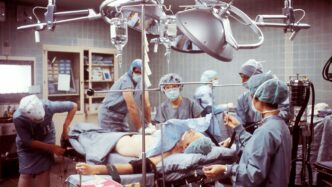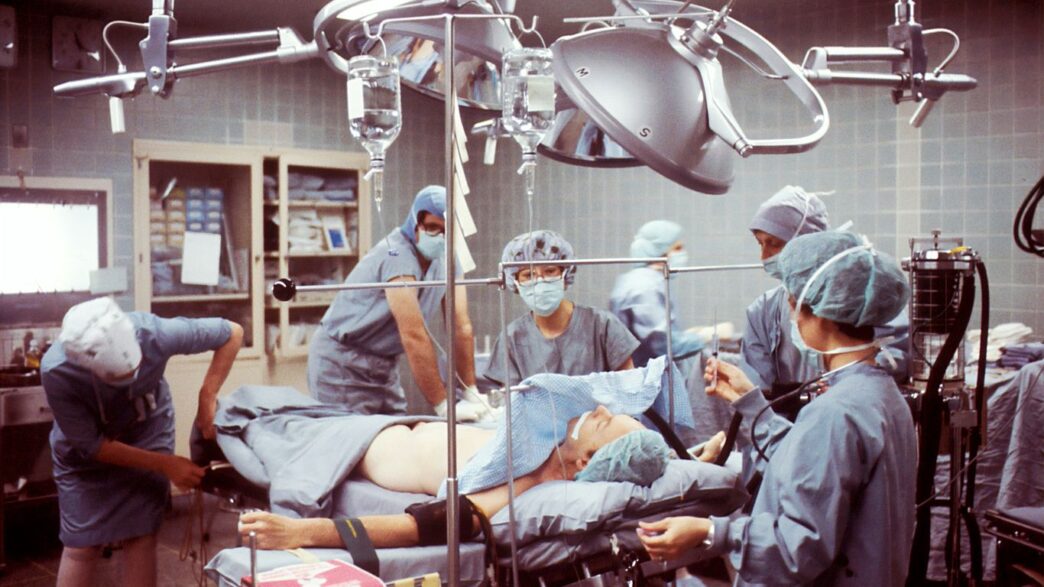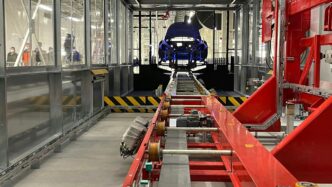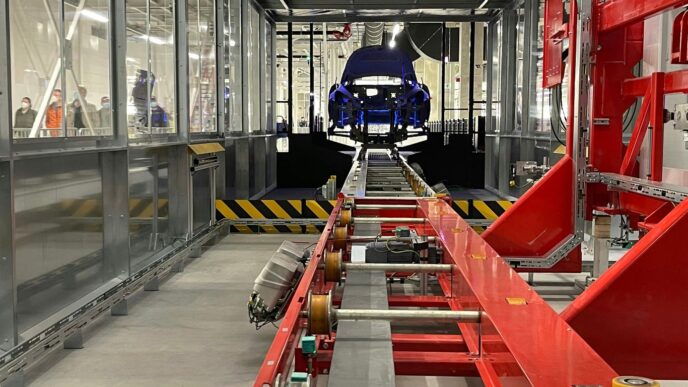Robotic Surgery Applications Across Specialties
Robotic surgery isn’t just a futuristic concept anymore; it’s actively being used in hospitals today, making a real difference in how doctors perform operations. Think of it as giving surgeons super-powered tools. These systems help them do things with more steadiness and a better view than they could with just their hands. This technology is changing the game across many different medical fields.
Gynecological Robotic Surgery Examples
In gynecology, robotic surgery is becoming a go-to for procedures like hysterectomies (removing the uterus) and myomectomies (removing fibroids). The precision offered by robotic arms means surgeons can work in tight spaces within the pelvis with less disruption to surrounding tissues. This often leads to smaller scars, less pain after the operation, and a quicker return to normal life for patients. It’s particularly helpful for complex cases or when a patient has had previous surgeries in the area.
Urological Robotic Surgery Examples
For urology, prostatectomies (removing the prostate, often for cancer) are a prime example. Robotic systems allow for incredibly delicate work, which is vital when operating near nerves that control continence and erections. Other common procedures include kidney surgeries, like removing tumors or reconstructing parts of the kidney. The enhanced vision and instrument control help surgeons achieve better functional outcomes and reduce the risk of complications.
Cardiac Robotic Surgery Examples
When it comes to heart surgery, robots are assisting with procedures like bypass surgeries and valve repairs. While not yet as widespread as in urology or gynecology, robotic cardiac surgery offers the potential for smaller incisions, leading to less chest wall trauma and faster recovery compared to traditional open-heart surgery. Surgeons can perform intricate maneuvers on the beating heart with greater stability.
Orthopedic Robotic Surgery Examples
Orthopedics has seen a big push with robotic assistance, especially in joint replacements like hips and knees. These robots don’t perform the surgery on their own; rather, they act as advanced guides for the surgeon. They help with precise bone cuts and implant placement, aiming for better alignment and fit. This can translate to improved joint function and potentially longer-lasting implants for patients. The technology helps surgeons plan the surgery down to the millimeter before they even start.
| Specialty | Common Robotic Procedures |
|---|---|
| Gynecology | Hysterectomy, Myomectomy, Ovarian Cyst Removal |
| Urology | Prostatectomy, Nephrectomy (kidney removal), Cystectomy |
| Cardiac | Coronary Artery Bypass Grafting, Mitral Valve Repair |
| Orthopedics | Total Knee Arthroplasty, Total Hip Arthroplasty |
Advancements in Robotic Surgical Techniques
Robotic surgery isn’t just about fancy machines; it’s about pushing the boundaries of what’s possible in the operating room. These systems are constantly evolving, making procedures safer, more precise, and less invasive than ever before. It’s pretty amazing how technology is changing the game for both surgeons and patients.
Minimally Invasive Robotic Procedures
This is where robotic surgery really shines. Instead of large incisions, surgeons use tiny cuts, guided by robotic arms. This means less pain for patients, quicker healing, and often, shorter hospital stays. Think of it like performing complex surgery through a keyhole – it’s that precise.
- Reduced scarring and blood loss: Smaller incisions lead to less visible scars and less bleeding during the operation.
- Faster recovery times: Patients can usually get back to their daily lives much sooner.
- Lower risk of infection: With smaller openings, the chance of infection goes down.
- Less post-operative pain: Patients generally report less discomfort after the surgery.
Telerobotic Systems in Surgery
This is the stuff of science fiction, but it’s becoming a reality. Telerobotic systems allow surgeons to operate on patients from a distance. Imagine a surgeon in a major city performing a procedure on someone in a rural area where specialized surgical skills are scarce. This technology has the potential to bridge geographical gaps in healthcare access. It requires incredibly reliable communication and highly sophisticated robotic equipment, but the implications for global health are huge.
Microbot Technology in Surgical Robotics
We’re even seeing robots get smaller – much smaller. Microbots are tiny robots, sometimes even microscopic, that can be introduced into the body to perform specific tasks. They can travel through blood vessels or other natural pathways to deliver medication directly to a tumor or perform delicate repairs from the inside. This is still an emerging area, but it promises even less invasive interventions and the ability to reach places in the body that are currently inaccessible.
- Targeted drug delivery
- Internal diagnostics
- Minimally invasive repairs
The Role of Technology in Robotic Surgery
Technology is really changing the game in robotic surgery, making things more precise and safer. It’s not just about the robots themselves, but all the smart tech working alongside them.
Artificial Intelligence in Robotic Surgery Examples
Artificial intelligence, or AI, is becoming a huge part of robotic surgery. Think of it as giving the robots a brain. AI can help surgeons by analyzing images during an operation in real-time, pointing out important stuff they might miss. It can also help reduce mistakes and make the surgery less damaging to the patient. Some systems even create a virtual copy of the patient, a ‘digital twin,’ so surgeons can practice tricky parts beforehand. This means safer surgeries and better results.
AI also helps make surgeries quicker and more effective. For example, in prostate cancer surgery, AI can help the robot make more precise cuts, which is good for getting rid of all the cancer and also for helping patients recover faster. It’s being used in all sorts of surgeries, from kids’ procedures to complex spine operations, often leading to shorter hospital stays and less pain.
Augmented Reality in Surgical Robotics
Augmented reality, or AR, is another cool technology that’s making its way into the operating room. It’s like giving surgeons special glasses that overlay important information onto what they’re seeing. Imagine a surgeon looking at a patient and seeing a 3D model of the organs or blood vessels right on top of the real thing. This helps them see exactly where to cut or avoid hitting something important.
AR can also help guide the robotic instruments more accurately. It’s like having a super-powered GPS for surgery. This can be especially helpful in complex surgeries where knowing the exact location of things is critical. It’s still developing, but the idea is to give surgeons better vision and guidance.
3D Printing for Medical Applications
While not directly part of the robot itself, 3D printing is playing a big role in making robotic surgery better. Surgeons can use 3D printing to create custom tools or models before an operation. For instance, they can print a model of a patient’s specific anatomy based on scans. This allows them to plan the surgery in detail and even practice on the model. It’s like having a practice run before the real thing. This can lead to more personalized and effective surgical plans, especially for complicated cases. It also helps in creating specialized instruments that might be needed for a particular procedure.
Impact and Future of Robotic Surgery
Robotic surgery has really changed how we do things in the operating room. It’s not just about fancy machines; it’s about making surgery better for everyone involved. For patients, this often means less pain, smaller scars, and getting back to their normal lives much faster. Think about it – instead of a big cut, you might have just a few tiny ones. That’s a huge difference in recovery.
Enhanced Surgeon Dexterity and Precision
Surgeons using robotic systems get a kind of superpower. The robotic arms can move in ways a human hand just can’t, with incredible steadiness. They can zoom in on tiny areas and make super precise movements, which is a big deal for delicate operations. It’s like giving a surgeon a much finer set of tools and a steadier hand, all controlled by them.
Improved Patient Outcomes and Recovery
When surgeons can be more precise and less invasive, patients tend to do better. We’re seeing fewer complications and shorter hospital stays. This means less time hooked up to machines and more time healing at home. It’s a win-win: the surgeon can do their best work, and the patient gets back on their feet quicker.
Future Directions in Robotic Surgery
So, what’s next? Well, the technology isn’t standing still. We’re looking at robots that can do even more, maybe even some tasks more autonomously under surgeon supervision. There’s also a lot of talk about making these systems more accessible, so more hospitals and patients can benefit. Imagine robots helping surgeons in remote areas or even assisting in procedures that are currently too complex for even the most skilled human hands. The goal is to make surgery safer, more effective, and available to more people, no matter where they live. It’s an exciting time, and the possibilities seem pretty endless.
Challenges and Considerations in Robotic Surgery
So, robotic surgery sounds pretty amazing, right? But like anything new and fancy, it’s not all smooth sailing. There are definitely some hurdles to jump over before it becomes as common as, well, a regular doctor’s visit.
Cost-Effectiveness of Robotic Procedures
Let’s get the big one out of the way first: money. These robotic systems aren’t cheap. We’re talking serious upfront costs for the machines themselves, plus ongoing expenses for maintenance, software updates, and specialized training for the surgical teams. This can be a real tough pill to swallow for smaller hospitals or clinics that don’t have massive budgets. It makes you wonder if everyone, no matter where they live or what hospital they go to, will be able to get this kind of care. It’s a bit of a balancing act, trying to figure out if the long-term benefits, like shorter hospital stays, really add up to make the initial investment worthwhile.
Surgeon Training and Education
Then there’s the learning curve. Imagine being a surgeon who’s been doing things one way for years, and suddenly you have to learn to operate a robot. It’s not just about pushing buttons; it’s a whole new way of seeing and interacting with the patient. Surgeons need dedicated training, often involving simulations and then supervised practice on actual patients. This transition period can be tricky, and patient safety has to be the top priority. Plus, the technology keeps changing, so surgeons need to keep learning, which takes time and resources.
Ethical and Legal Aspects of Robotic Surgery
This is where things get really interesting, and maybe a little complicated. When a robot is involved, who’s responsible if something goes wrong? Is it the surgeon, the robot manufacturer, or maybe the software programmer? Figuring out liability is a big legal puzzle. And what about patient data? These systems collect a lot of information, and keeping that private and secure is super important. Then there’s making sure patients really understand what they’re signing up for. Informed consent means patients need to know not just about the surgery itself, but also about the robot, the surgeon’s experience with it, and any potential risks specific to using the technology. It’s a lot to think about, and clear rules are needed to make sure everyone is protected.
Robotic Surgery Examples in Pediatric and Specialized Fields
Robotic surgery isn’t just for adults anymore. It’s making a real difference in some pretty specialized areas, including for our youngest patients and in some very delicate procedures.
Pediatric Robotic-Assisted Surgery
When it comes to kids, surgery can be extra tricky. The good news is that robotic systems are being used more and more to help surgeons operate on children. Think about it: smaller bodies mean less room to work, and robotic arms can be incredibly precise, which is a big deal. Studies have shown that using robots for pediatric procedures can lead to less pain after surgery, smaller scars, and shorter stays in the hospital compared to traditional methods. It’s all about making the experience as smooth and safe as possible for children.
Here’s a quick look at some benefits:
- Reduced postoperative pain: Kids tend to feel less discomfort after surgery.
- Minimal scarring: The incisions are typically much smaller.
- Shorter hospital stays: Patients can often go home sooner.
Neurosurgical Robotic Applications
Operating on the brain or spinal cord is incredibly delicate work. Robotic systems are stepping in here to give surgeons a steadier hand and better vision. These robots can help with things like biopsies or removing small tumors with a level of accuracy that’s hard to achieve otherwise. The precision offered by robotic assistance is particularly important when working near critical nerves and blood vessels in the brain. This technology allows for more targeted interventions, potentially reducing damage to healthy tissue and improving recovery.
Spine Oncology Robotic Surgery Examples
When cancer affects the spine, surgery can be complex, especially when trying to remove tumors while preserving spinal function. Robotic systems are being used to help surgeons tackle these challenging cases. They can assist in procedures like spinal fusions or tumor removals, allowing for more precise instrument placement and better visualization of the surgical area. This can lead to more complete tumor removal and a quicker return to mobility for patients dealing with spinal cancer.
Wrapping Things Up
So, we’ve looked at how robots are changing the game in surgery across different medical fields. It’s pretty amazing to see how these machines are helping surgeons be more precise and, in many cases, making things easier for patients to recover. From delicate heart procedures to complex abdominal surgeries, robots are becoming a common sight. Of course, it’s not all smooth sailing. There are still hurdles like the cost of the technology and making sure surgeons get the right training. But as the technology keeps getting better and more accessible, it’s clear that robotic surgery is here to stay and will likely become even more important in how we do medicine in the future. It’s a field that’s constantly evolving, and it’s exciting to think about what’s next.














